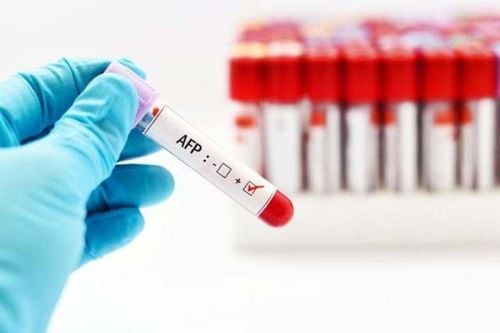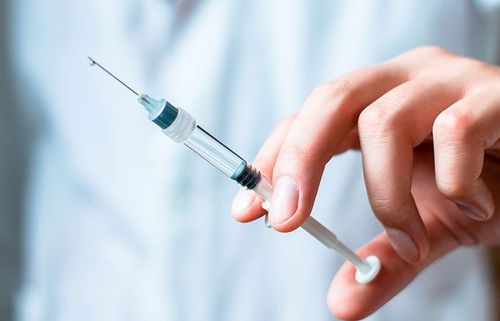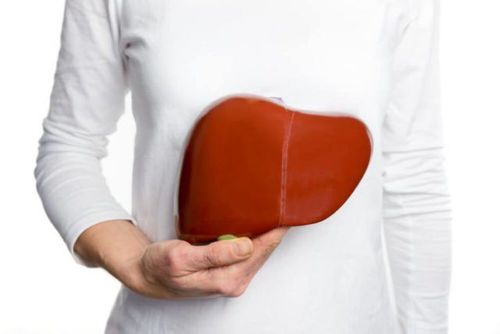This is an automatically translated article.
Posted by Master, Doctor Tran Quynh Trang - Doctor of Biochemistry - Laboratory Department - Vinmec Times City International HospitalAutoantibodies play an important role in the diagnosis and classification of autoimmune liver disease. Panel test qualitatively 14 autoantibodies in autoimmune liver disease including: AMA-M2, M2-3E, Sp100, PML, gp210, LKM-1, LC-1, SLA/LP, SS-A, Ro-52 , Scl-70,CENP A, CENP B, PGDH are currently being performed at Vinmec Times City International Hospital with high accuracy.
1.What is autoimmune liver disease? Chronic disease is caused by the body's immune system attacking the liver, causing inflammation and destruction of the liver. Common symptoms are fatigue, joint pain, nausea, loss of appetite, liver pain, jaundice and may also be asymptomatic.
Inflammatory types of autoimmune liver disease include:
Autoimmune hepatitis (AIH). Primary biliary cholangitis (PBC). Primary sclerosing cholangitis (PSC). Overlap Syndrome - Overlap Syndrome. The prevalence of autoimmune liver disease is as follows:
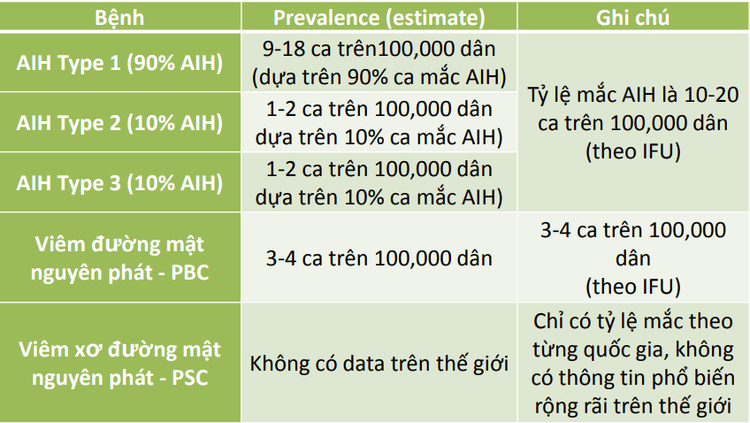
1.1. Autoimmune hepatitis Autoimmune hepatitis (AIH) is a chronic and progressive inflammation of the liver of unknown cause. There are two known types of autoimmune hepatitis:
Type 1: Characterized by the presence of anti-smooth muscle antibodies ASMA, with or without antinuclear antibodies (ANA). Type 2: Characterized with positive anti-hepatic/anti-renal (anti-LMK) or anti-hepatocellular (anti-LC) antibodies. Anti-LC-1 antibody titre is correlated with AIH activity level, anti-LC-1 decreases when immunosuppressive therapy is effective, so anti-LC-1 concentration can be used to monitor the effectiveness of treatment. Many studies have shown that, among patients with autoimmune hepatitis, women make up the majority, and men make up only 10% to 20% of all patients. Autoimmune hepatitis can manifest in a variety of ways, depending on the severity of the acute liver disease, the inflammatory stage, or the complication of cirrhosis. The most common symptoms are fatigue, malaise, jaundice, abdominal pain, and sometimes joint pain.
Symptoms of liver failure such as ascites, hepatic encephalopathy, of which venous bleeding is a rare initial manifestation of autoimmune hepatitis. Autoimmune hepatitis can co-occur with other autoimmune diseases such as Graves' disease, rheumatoid arthritis, type I diabetes, etc. About 25% of patients with autoimmune hepatitis have no symptoms. The most common physical symptoms of autoimmune hepatitis were hepatomegaly (87%), jaundice (69%) in critically ill patients.
Confirming whether a patient has autoimmune liver disease is challenging due to the variety of symptoms and the complex way of identification. However, a clear diagnosis is important for appropriate and timely methods. Autoantibodies remain an important tool for clinicians, the first serological marker proposed to aid in distinguishing viral from chronic autoimmune hepatitis. Autoantibodies are one of the distinguishing features of autoimmune hepatitis. Antinuclear antibodies, anti-smooth muscle antibodies (SMA), and liver/renal microsomal antibodies 1 (LKM1) are key components for the diagnosis and classification of autoimmune hepatitis.
1.2. Primary biliary cirrhosis (PBC) Primary biliary cirrhosis is a chronic disease in which the bile ducts in the liver are slowly destroyed, mostly without symptoms. If symptoms appear, they will affect quality of life such as: itching, dryness of the exocrine glands, especially in the eyes and mouth, discomfort in the abdomen, jaundice, fatigue, feelings of sadness and discomfort in the legs, and insomnia. , depression .
The prevalence of primary biliary cirrhosis is: 12 cases per 100,000 population. Incidence rate: 1.2 cases per 100,000 cases per year. The median survival without treatment is 9-10 years, mostly affecting women (90%).
Currently, there are 3 criteria used to diagnose PBC:
Biochemical markers of cholestasis: increased ALP and GGT activity Liver biopsy shows histological features of PBC Presence of specific autoantibodies in PBC, these include: AMA-M2 (85-95% of cases) and ANA (5-50% of cases). 1.3. Primary sclerosing cholangitis (PSC) Primary sclerosing cholangitis is a chronic disease caused by magnetic destruction of the intrahepatic and extrahepatic bile ducts. Incidence rate: 4-8 cases per 100,000 population, number of new cases: 0.7 cases per 100,000 population per year. Primary sclerosing cholangitis is most common in young men and is associated with ulcerative colitis (80% of PSC patients). Accordingly, up to 50% of people with the disease have no symptoms. In stages, the disease has the following symptoms:
Early stage: Fatigue, itching. Advanced stage: Pain in right upper abdomen, fever, chills, night sweats, hepatomegaly, splenomegaly, weight loss, jaundice and yellow eyes. These autoimmune diseases occur largely (85% of patients) with chronic inflammatory bowel diseases, especially ulcerative colitis. They may also be associated with extrahepatic diseases, especially sicca syndrome, autoimmune thyroiditis, inflammatory arthritis or retroperitoneal and mediastinal fibrosis. Serology with PSC detects autoantibodies, with p-ANCA (anti-eosinophilic cytoplasmic perinuclear antibodies).
It is important to identify autoimmune hepatitis as the cause of acute hepatitis and/or fulminant liver failure, as delay in diagnosis can delay treatment leading to a poorer prognosis for inflammation. autoimmune liver. While steroid immunosuppressive therapy can avoid the need for a liver transplant.
2. Autoantibody test in diagnosis, monitoring treatment of autoimmune liver disease Autoantibodies are one of the important components to diagnose and classify autoimmune hepatitis, they need to be tested in patients with autoimmune hepatitis. suspect this situation. The presence of anti-smooth muscle antibodies (SMA) or antinuclear antibodies (ANA) is consistent with the diagnosis of autoimmune hepatitis in patients with clinical or laboratory evidence of liver injury.
The presence of anticellular antibodies (AMA) is consistent with the diagnosis of primary biliary cirrhosis in patients with clinical or laboratory evidence of hepatobiliary injury.
Specific diagnostic diagram is as follows:
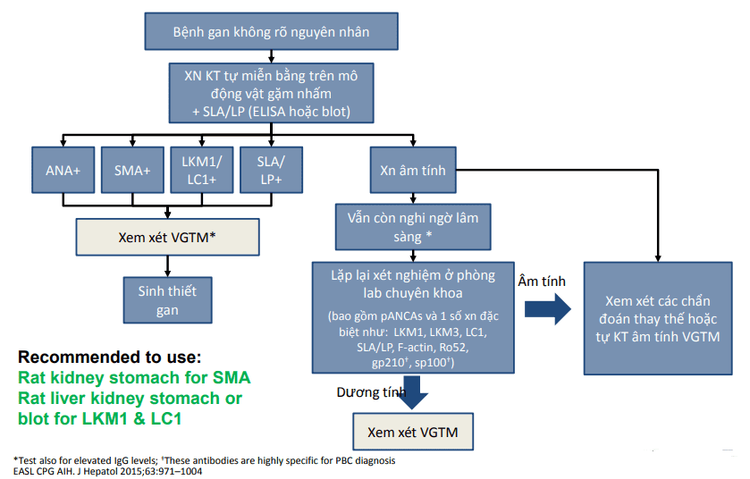
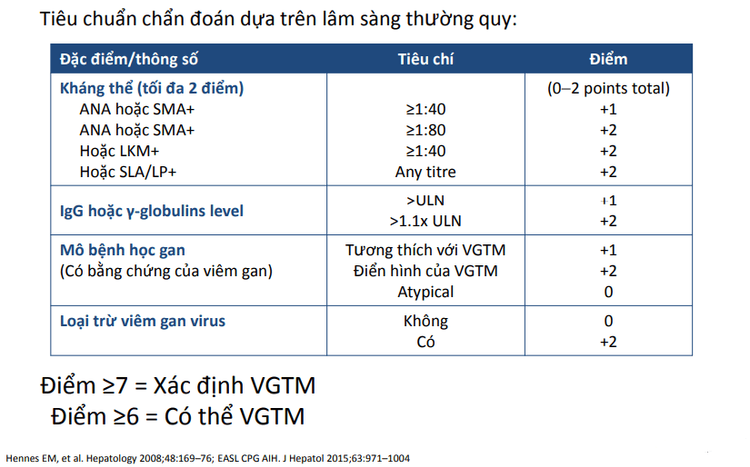
Role of autoantibodies in treatment:
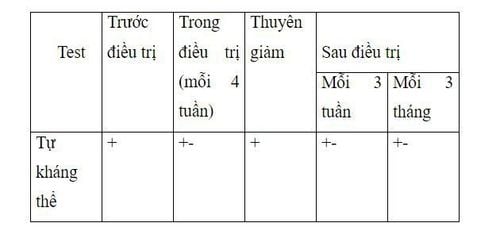
3. Autoantibody detection test in autoimmune liver disease at Vinmec Times City International Hospital Qualitative testing for autoantibodies has been performed in many countries around the world. In Vietnam, at present, panel testing for 14 autoantibodies in autoimmune diseases in the liver includes: AMA-M2, M2-3E, Sp100, PML, gp210, LKM-1, LC-1, SLA/LP, SS-A, Ro-52, Scl-70,CENP A, CENP B, PGDH are performed automatically at the laboratory department of Vinmec Times City International Hospital on the EURO-BlotOne system providing a solution to change new technology based on lineblot (EUROLINE).
Panel is used to quantify the presence of these autoantibodies in serum/plasma for the purpose of diagnosing primary biliary cirrhosis, unexplained elevation of liver enzymes, suspected autoimmune hepatitis and syndrome overlap syndrome.
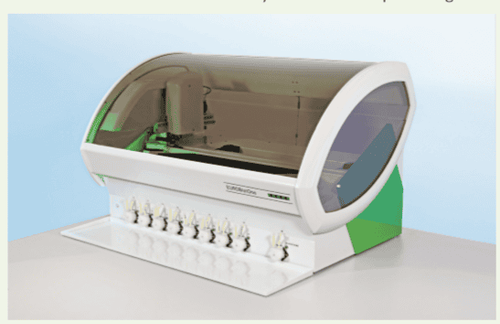
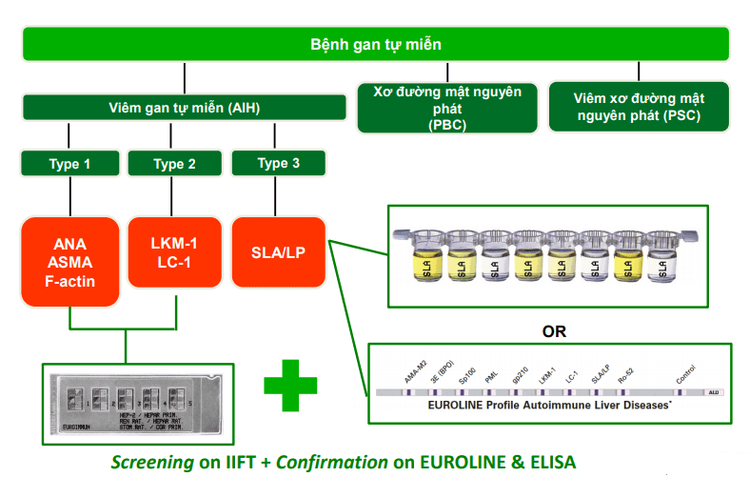
Accordingly, the identification of autoantibodies is a prerequisite for the diagnosis of autoimmune hepatitis. They are components of the diagnostic scoring system and provide useful information for the classification of autoimmune hepatitis.
Testing for liver-related autoantibodies is included during working with patients with hepatitis or cholestasis of unknown etiology (Review published: 27 March 2018 doi: 10.3389/fimmu.2018.00609).
Currently, the panel test for the qualitative analysis of 14 autoantibodies in autoimmune liver disease is fully automated at the Laboratory Department of Vinmec Times City International Hospital. Therefore, when detecting or suspecting symptoms of the disease, you can completely go to Vinmec to be examined, perform tests, and diagnose the stage of the disease.
Screening and detecting the disease at an early stage will bring a better prognosis for treatment, and the recovery time will also be shortened. Especially during the treatment process, specialists will always work closely with other specialists to bring about the highest efficiency and comfort for the patient. After going through the treatment phase, the patient will also be monitored and re-examined to determine whether the treatment is effective or not.
If you want to learn more about diagnostic tests for gastrointestinal diseases as well as many other diseases, you can contact Vinmec website for service.
Please dial HOTLINE for more information or register for an appointment HERE. Download MyVinmec app to make appointments faster and to manage your bookings easily.






